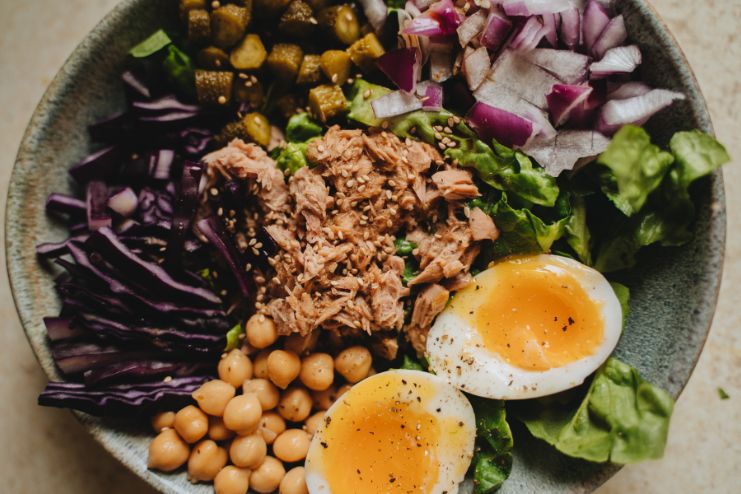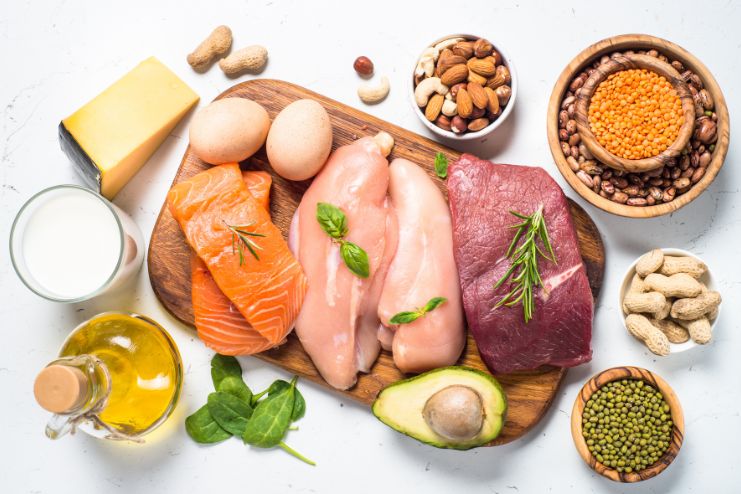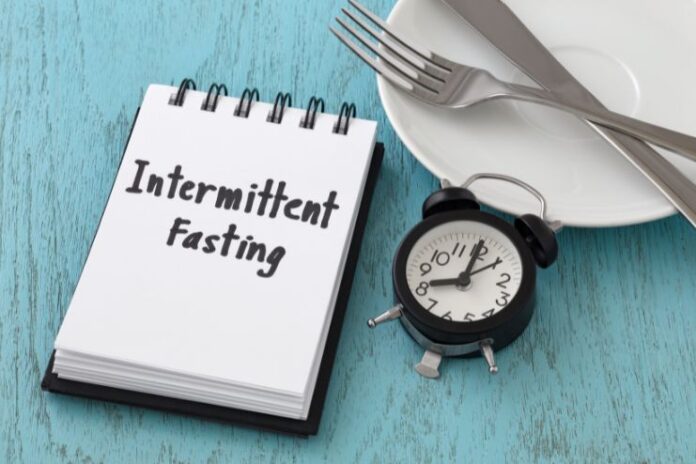“You’ve just completed your fast—but should you break it with protein or fat?”
Health enthusiasts argue about this subject, particularly those who practice intermittent fasting. Your post-fast meal selections can have a big impact on your goals, whether you want to burn fat efficiently, maintain energy, or retain muscle. The first meal you eat after a fast determines how your body heals, refuels, and continues to burn calories effectively.
This article explores the differences between high-protein and high-fat meals in detail to assist you in choosing the best option for your lifestyle and health objectives. From providing clever intermittent fasting meal ideas to comprehending how each macronutrient impacts your metabolism, this article will answer all your questions about what to eat after intermittent fasting and how to create the best post-fast meals.
Read More: Is Intermittent Fasting Safe for Women? What Experts Recommend
What Happens to Your Body After a Fast?
Humans have been fasting for thousands of years to revive the body, mind, and spirit. It is also a prevalent practice in many different religions around the world. After a fast, your body is in a catabolic condition, which means it has been using stored energy as fuel.
As is well known, the body can go several days without meals, but fluids are necessary to keep the body working. Fasting occasionally benefits you, but have you ever considered what your body goes through during a fast and whether it’s healthy?
Here are some clues about what happens within your body when you don’t give it the food it needs each day.
Digestion: Since digesting large amounts of food can be stressful for the organs involved in digestion, fasting is a great way to give your digestive system a break from overeating or binge eating. However, since fasting reduces the size of your stomach, it is not very healthy to fast more than once a week.
Weight Loss: Fasting is a familiar strategy people with body image issues use to lose weight rapidly. Once you start eating, though, this can return because your metabolism will have slowed down, and you will be storing even more fat from your food.
Mood: Regular fasting can deplete the body and mind of nutrients and energy. As you battle hunger pangs, ghrelin continues to grumble in the background, encouraging your body to locate food.
Addictions: One of the numerous advantages of fasting is that it trains your body to function without relying on specific cravings, such as sugar, coffee, and other liquids. The body learns to live without reliance and detoxes the blood of excessive addiction byproducts, which also reduces the craving.
Benefits of High-Protein Meals After a Fast

There are several advantages to choosing protein after intermittent fasting, particularly if your objectives are fat loss, muscle maintenance, or general metabolic health. Your body requires nutrients to aid in growth and recovery following a fast.
Protein is crucial for muscle growth and preservation during calorie restriction. It is especially true if you exercise when you’re supposed to fast.
The energy required for your body to break down, absorb, and metabolize your food is known as the thermic effect of food (TEF).
In healthy adults who eat a diversified and balanced diet, TEF typically accounts for around 10% of their caloric intake and is a component of their daily calorie expenditure. If you burn 2000 calories a day, about 200 of those calories will come from food alone.
Protein and complex carbohydrates, for example, have a more considerable thermic effect than fats or simple carbohydrates since they require more effort from your body to digest, resulting in higher energy expenditure and calorie burning.
Growth, brain development, healthy bones, and hormone production are just a few of the many processes that depend on protein, a macronutrient. Amino acids are the “building blocks ” that make up protein. Humans require 22 amino acids, nine of which are “essential,” as our bodies cannot produce them and must obtain them through diet.
Protein stabilizes the blood sugar level and helps you feel fuller for longer, which lessens cravings and post-meal crashes. Fasting or not, protein intake is vital, but it’s also critical to supplement it with other essential nutrients. It is crucial to provide your body with the vitamins and minerals it needs for the general health, including whole grains, vegetables, and healthy fats.
Protein is still crucial in the post-fast nutrition guide because of its special metabolic advantages, even though some people may choose a high-fat diet after fasting, particularly with keto and intermittent fasting meals. A substantial protein intake is a wise move when considering the best macros after fasting to support both satiety and body composition objectives.
Read More: OMAD vs. 16:8: Which Intermittent Fasting Method Is Right for You?
Benefits of High-Fat Meals After a Fast
Choosing a high-fat diet after fasting can have significant advantages for people on a low-carb diet. Dietitians often discuss the question of whether low-fat diets are healthier than full-fat foods. The problem is that there isn’t a single solution that works for everyone. A person’s genetics, health conditions, taste preferences, capacity to follow a diet, and even the food itself are just a few of the numerous variables at work.
Additionally, high-fat meals provide long-lasting energy without causing crashes, sometimes linked to meals heavy in carbohydrates or protein. Because fats digest more slowly, your body can use them as a consistent food source for hours.
Dumping syndrome symptoms can also result from consuming excessive fatty foods after fasting. Although eating too much fat might have the opposite effect and result in the symptoms listed above, fat generally delays digestion.
Avoid the following fatty foods after fasting:
Fried, oily meals.
Foods heavy in fat, such as skin-on chicken thighs or marbled beef.
Dairy products with a lot of fat.
Decadent sweets, such as cheesecake or ice cream.
We recommend eating avocados or nut butter with meals and a bit of cheese and full-fat salad dressing, but only in moderation. These will increase your sense of fullness. You feel more satisfied after eating, which is one of the reasons we advocate for a diet heavier in fat and protein. Because they take longer to digest, fat, protein, and fiber make you feel fuller for longer between meals.
Protein vs. Fat: Which One Should You Prioritize?

It all depends on your lifestyle and personal objectives when choosing whether to break your fast with protein after intermittent fasting or to consume a high-fat diet after fasting.
The conflict between high-protein and high-fat diets continues to rage in the constantly changing field of nutrition. However, there is no one-size-fits-all ratio for these two macronutrients. Whether your objective is blood sugar control, weight loss, muscle growth, performance enhancement, or maintaining a healthy weight, your protein-to-fat ratio should align with your particular objectives.
We all need adequate protein to build and repair our muscles and organs, produce hormones and neurotransmitters, detoxify, and carry out numerous other biological processes.
Satiety research indicates that protein is the most common satiating macronutrient. Therefore, decreasing calorie consumption is consistent with increasing the protein percentage of your diet or the proportion of total calories from protein.
Give high-protein meals a top priority if your primary goal is muscle growth or post-workout healing. Protein is very crucial for muscle growth and repair, particularly if you’re training during or after your fasting window.
On the other hand, a high-fat diet after fasting might be more beneficial if you’re looking for sustained energy and mental clarity. But fat is the macronutrient with the highest energy density. Overall, it usually doesn’t include many micronutrients. Many people discover they need to reduce their body fat over time to continue changing their body composition.
Fats are perfect for those who thrive on mental focus and enjoy keto and intermittent fasting meals. They digest slowly and offer a consistent energy source without insulin spikes.
Read More: Cheat Days While Intermittent Fasting: Should You or Shouldn’t You?
Ideal Macronutrient Ratios for Breaking a Fast

Macros, or macronutrients, are the two fundamental nutrients of the body needs in significant quantities to function correctly. A balanced diet with sufficient fat, protein, and carbohydrates is crucial. Health problems may arise if one of these macronutrients is eliminated or insufficient. For example, eating a diet low in protein may cause weakness, stunt growth, and decrease muscle mass.
Monitoring your macronutrient ratios can be useful when you first start intermittent fasting until you have a better idea of which foods provide the balance you require.
When searching for the ideal macro ratios for intermittent fasting, you should be aware that no single ratio or technique will be effective for everyone. This is because each person’s nutritional requirements differ based on a number of variables, including objectives, age, gender, height, weight, degree of activity, and internal health.
In light of this, the Institute of Medicine of the National Academics has recommended certain ranges for macronutrient consumption. It states that around 45% and 65% of calories should come from carbohydrates, around 20% to 35% of fats, and around 10% to 35% of proteins.
Given this distribution, you should recommend a macro ratio of 40:40:20 or 30:40:30 (in the sequence of proteins, carbs, and fats) for weight reduction.
In addition, numerous online macro calculators can be used to determine the necessary macros for intermittent fasting.
What Food to Avoid After a Fast

It can be tempting to indulge in a decadent dinner after fasting. However, it’s typically not a good idea. After a fast, avoid these food groups.
Foods High in Added Sugar: Dumping syndrome, also known as rapid stomach emptying, can result from consuming sugary foods after fasting. It occurs when undigested food passes through your small intestines too quickly after leaving your stomach. When foods high in sugar enter your system more quickly than your body can process, your body sends extra fluid to your intestines to dilute all the sugar. It may result in diarrhea, cramping in the stomach, or an excessive feeling of fullness.
High-Fiber Foods: Fiber is generally beneficial to your general health and digestion. However, eating high-fiber foods during a fast may be too much for your digestive system to manage, which could upset your stomach.
Spicy foods: The ingredient that gives chili peppers their heat is capsaicin. Although the precise causes are unknown, fasting may make you more sensitive to capsaicin. One explanation could be that capsaicin irritates the intestinal lining more readily when there is no food in your system to act as a buffer. Additionally, because fasting slows digestion, capsaicin may interact with your stomach lining longer than usual.
Alcohol: Having a glass of wine with your dinner is not a good idea, even though you might feel like celebrating after a fast. Alcohol can irritate the stomach lining and increase production of acid. It may result in diarrhea, indigestion, or heartburn. Additionally, alcohol can cause dehydration, which can hinder digestion.
Read More: How Intermittent Fasting Can Improve Your Skin and Slow Aging
Conclusion
Ultimately, your objectives, daily activities, and how your body reacts will determine whether you break your fast with protein after intermittent fasting or with a high-fat meal after fasting. There is not one-size-fit- to all solution; what suit to one individual may not work for another person.
In their post-fast diet guidance, many people find success by combining healthy fats and protein to create meals that promote satiety, increase metabolism, and facilitate muscle repair. This well-rounded strategy can also help control cravings and maintain a steady energy levels throughout the day.
Experimenting with the optimum macros after fasting is crucial, regardless of whether you follow keto and intermittent fasting meals or opt for a more flexible approach. Keep a record of your feelings following several meals, and don’t be scared to make adjustments as necessary. Make each post-fast meal matter, pay attention to your body, and fuel it sensibly to support your health path.
References
- https://www.eatingwell.com/article/8023728/what-happens-to-your-body-when-you-do-intermittent-fasting/
- https://www.medicinenet.com/what_happens_to_you_when_you_fast_for_16_hours/article.htm
- https://www.abc.net.au/news/2025-03-16/whats-going-on-inside-your-body-when-fasting/105022090
- https://www.sciencedirect.com/science/article/pii/S0002916523191775
- https://www.loseit.com/articles/how-to-eat-a-high-protein-diet-while-practicing-an-intermittent-fasting-dietary-approach/
- https://www.bbcgoodfood.com/health/nutrition/spotlight-high-protein-diets
- https://www.uchicagomedicine.org/forefront/gastrointestinal-articles/which-are-healthier-low-fat-or-full-fat-foods
- https://lifemd.com/learn/what-to-eat-after-fasting
- https://www.healthline.com/nutrition/what-breaks-a-fast
- https://www.goodrx.com/well-being/diet-nutrition/best-foods-to-eat-after-fasting
- https://optimisingnutrition.com/satiety-index/
- https://optimisingnutrition.com/high-protein-vs-high-fat/
- https://www.trainerize.me/articles/prioritizing-protein-and-healthy-fats-for-weight-loss/
- https://pubmed.ncbi.nlm.nih.gov/16004827/
- https://www.healthline.com/nutrition/6-ways-to-do-intermittent-fasting
- https://www.medicinenet.com/the_best_macronutrient_ratio_for_weight_loss/article.htm
- https://betterme.world/articles/intermittent-fasting-macros/
In this Article
















